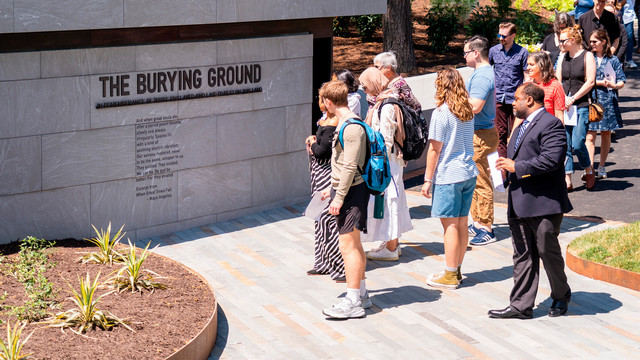In Memoriam
Bearing new witness
On a beautiful late-April afternoon, the university held a consecration ceremony for the Burying Ground Memorial, which honors the generations of enslaved individuals whose lives are woven into the history of the site and surrounding land.
“This moment celebrates the resiliency, strength, courage, and faith of so many who simply hoped to be able to properly recognize and honor those that were seemingly forgotten and voiceless,” Rasheeda D. Chambers, ’03, said at the ceremony. On July 1, she became president of the UR Alumni Association’s board.
Attention to the site was spurred in 2018 by the research of Shelby Driskill, a student in UR’s School of Professional and Continuing Studies. In 2019, she and UR faculty member Lauranett L. Lee published a university-sponsored report about the site. The report, “Knowledge of This Cannot Be Hidden,” detailed the history of the land and surrounding areas before and after the university began acquiring it in 1910. Records and other evidence show the site had been used as a burying ground for people held in enslavement.
Shortly after the report’s publication, the university established a committee to guide the care and preservation of the site and began identifying and consulting with members of descendant communities. Three design principles emerged during planning: that the site should “remain sacred and lightly touched; ... be unique, accessible, and inviting; and ... balance sentiments of reconciliation and resilience with the certainty of an enduring struggle.”
Construction of the Burying Ground Memorial began in 2024. Descendants held a private consecration event several days before the public consecration in April.
Planners identified a living witness tree at the site dating to when the Burying Ground may have been active. One of its acorns now grows as a sapling at the memorial’s entrance. Portraits on a wall are drawn from the features shown in family photos of descendants. The memorial’s bronze work features Adinkra symbols from West Africa.
“May the memorial that will preside over this ground from here onward make visible the dignity and honor of those who lived and died here against their will and be for us a sign of healing and hope,” said Craig Kocher, university chaplain.
